LIGHTHOUSE ART - Watercolours, Oils, Acrylics, Gouache, Pastels...
PASTELS
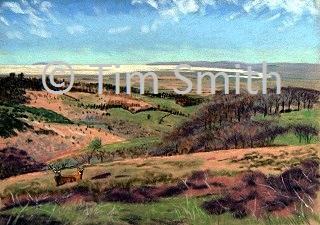
A Quick Glance - Atop Will's Neck across the bay (above)
Quantock Gateway - Birches Corner (right)
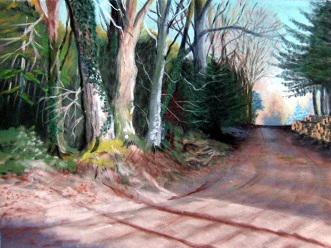
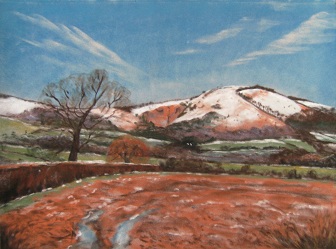
More to Come! - Will's Neck from near Triscombe (above)
The Crunch of Autumn Leaves - A Stand of Beeches (right)
Six views of the Quantock Hills, Somerset
(All chalk pastel painted on velour)
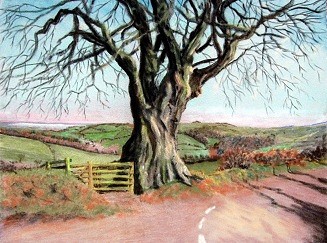
Disappearing Light - Heathcombe Wood, Enmore (left)
Spring In the Air - Crocombe to Stowey Road (below)
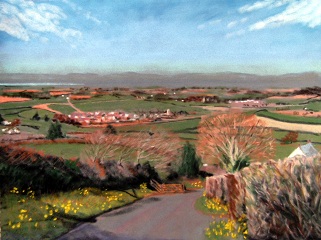
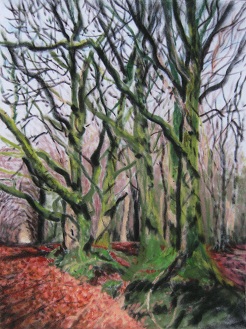
The French term pastel was first used in the 17th century, though Leonardo da Vinci was using them back in the 15th. It basically means "paste" - for a paste is first made from pigment, water and gum before being dried as a stick. Pastels are great fun to paint with. Chalk pastels used on sandpaper results in great drama; when used with velour, the picture takes far longer to paint, but the finish is more subtle and velvety. For replicating animal fur, pastels can be blended on pastel paper. Oil pastels obviously reject water, so when a watercolour wash is used in addition, interesting, yet pleasing, results can be had! There are further examples in the "Animals" page.
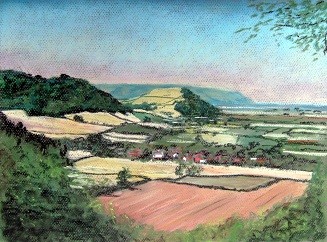
Ham Country - South Somerset (Chalk pastel on paper)
Bay of Islands
Steepholm & Flatholm in the Bristol Channel, as seen from bluebell-draped Brean Down (Chalk pastel on velour)
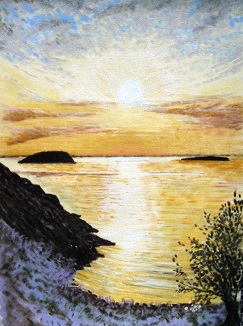
Time Flies - Dandelion Clocks (Chalk pastel on paper)
Autumn Array - Honesty, Teasels & Cow Parsely
(Oil pastel with watercolour)
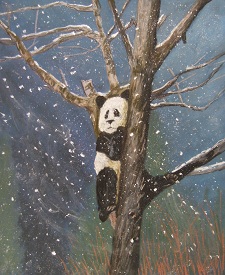
'Want to come Down Now!' - Panda Up a Tree
(Chalk pastel on paper)
Cotton Reels - Christon
(Chalk pastel on sandpaper)
The Island of Frogs - Brent Knoll
(Chalk pastel on paper)
Sunflowers (Chalk pastel on paper)
Squirrel Nutkins (Chalk pastel on paper)
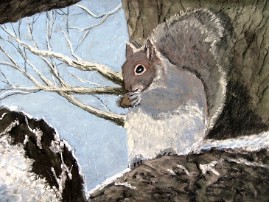
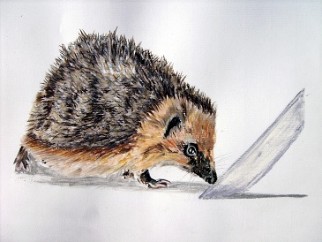
Earnest - Hedgehog (Chalk pastel on paper)
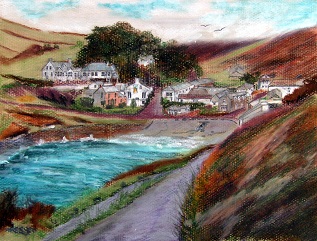
Smugglers' Hamlet - Port Gaverne, Cornwall (Oil Pastel)
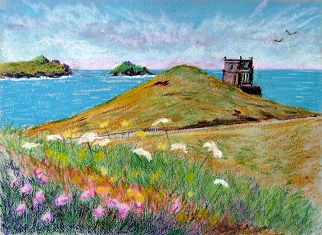
Sea of Adventure - Doyden Castle, Port Quin, Cornwall (Oil Pastel)
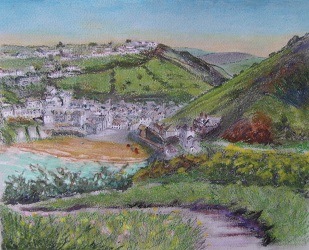
Rest In Sight - Port Isaac, Cornwall (Oil Pastel)
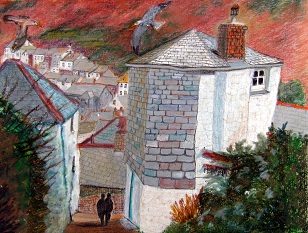
The Old Cobbler's Shop - Port Isaac, Cornwall (Oil Pastel)
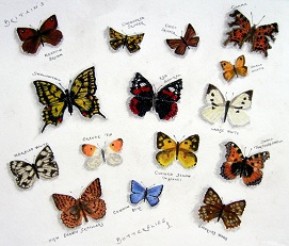
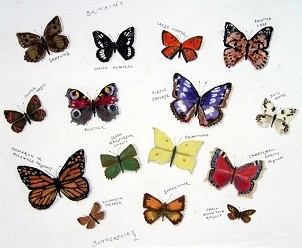
Britain's Beautiful Butterflies Numbers 1 & 2
GOUACHE
Pig Lane in Slopey Woods - The Polden Hills
Land of the Summer People - The Somerset Levels
Gouache, used in Europe since the 14th century, derives its name from the Italian guazzo, "water paint." Indeed, it is similar to watercolour, but the most striking difference is its opaqueness, rather than being on the transparent side. This is achieved by the addition of a substance such as chalk mixed with the pigment, gum and water. Heavier than watercolour, it is also termed "body colour."
"I find the main way my style changes with gouache is that I draw very little with pencil, but go straight in with the paint and the results are more 'loose.'"
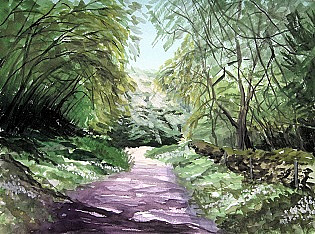
The Path to Black Rock - Cheddar
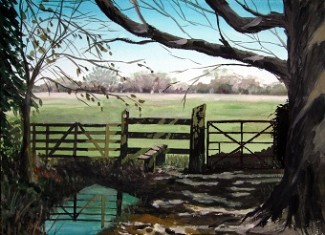
Secret World - East Huntspill
Please Note: If you are interested in buying the original of any artwork on this site, it may still be available - please contact the artist.
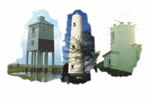
© TIM SMITH, LIGHTHOUSE ART